
From supermoons to shooting stars and stunning nebulae, photographers from all over the world have captured some of the most breathtaking astrological phenomena for this year’s Astronomy Photographer of the Year award.
Now in its ninth year, the competition – run by the Royal Observatory Greenwich in association with Insight Investment and BBC Sky At Night Magazine – received nearly 4,000 entries from photographers across 91 countries.
The winners will be announced on September 14 2017 at the Royal Observatory in Greenwich and here are some of the entries that made it to the shortlist:
Starburst Galaxy M82
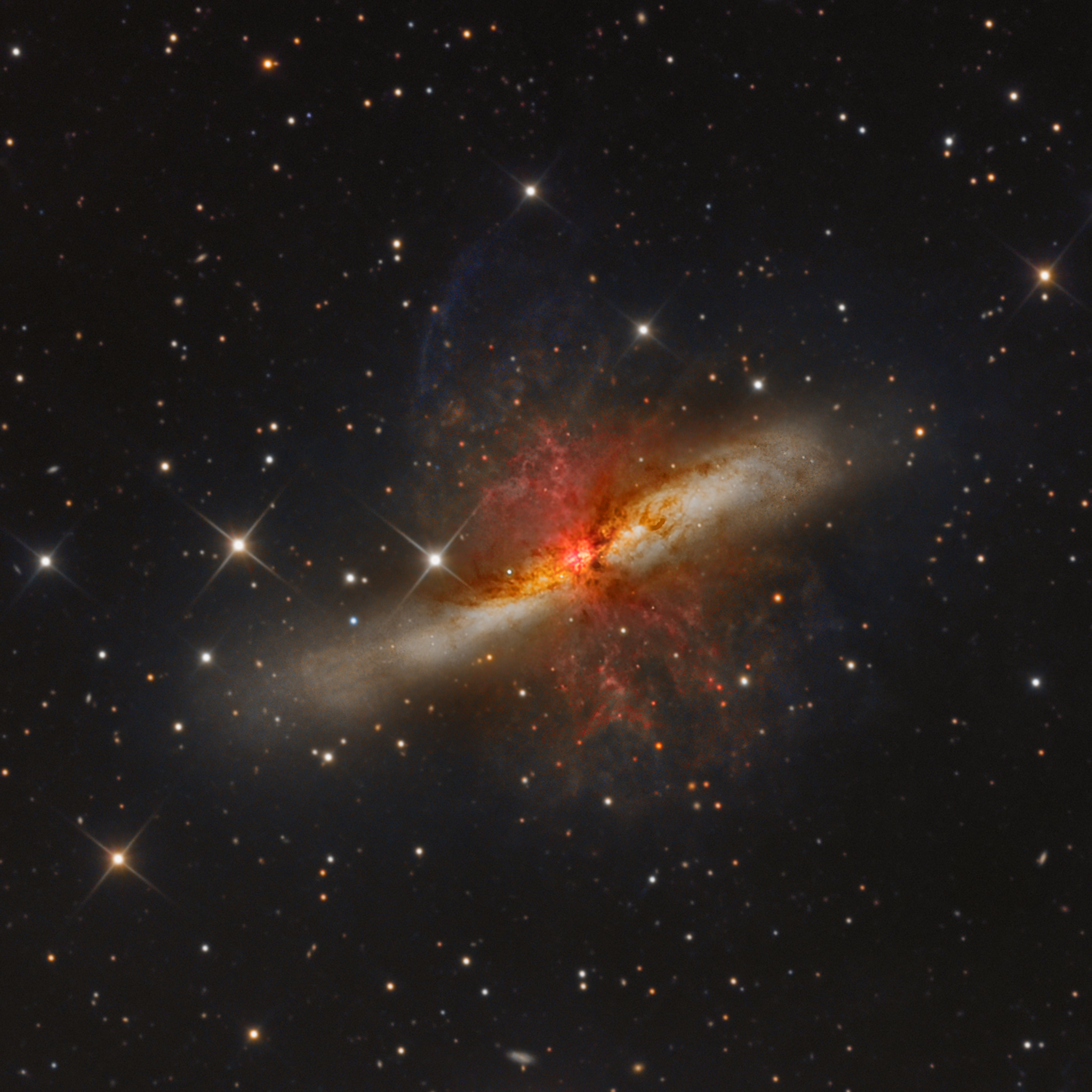 (Bernard Miller/The National Maritime Museum)
(Bernard Miller/The National Maritime Museum)
Where the photo was taken: Animas, New Mexico
Description: Also known as the Cigar Galaxy, the M82 gleams five times brighter than our galaxy (the Milky Way) and lies some 12 million light years away from Earth in the constellation of Ursa Major.
In a show of radiant oranges and reds, the superwind bursts out from the galaxy where a plethora of stars are forming.
Ghostly sun
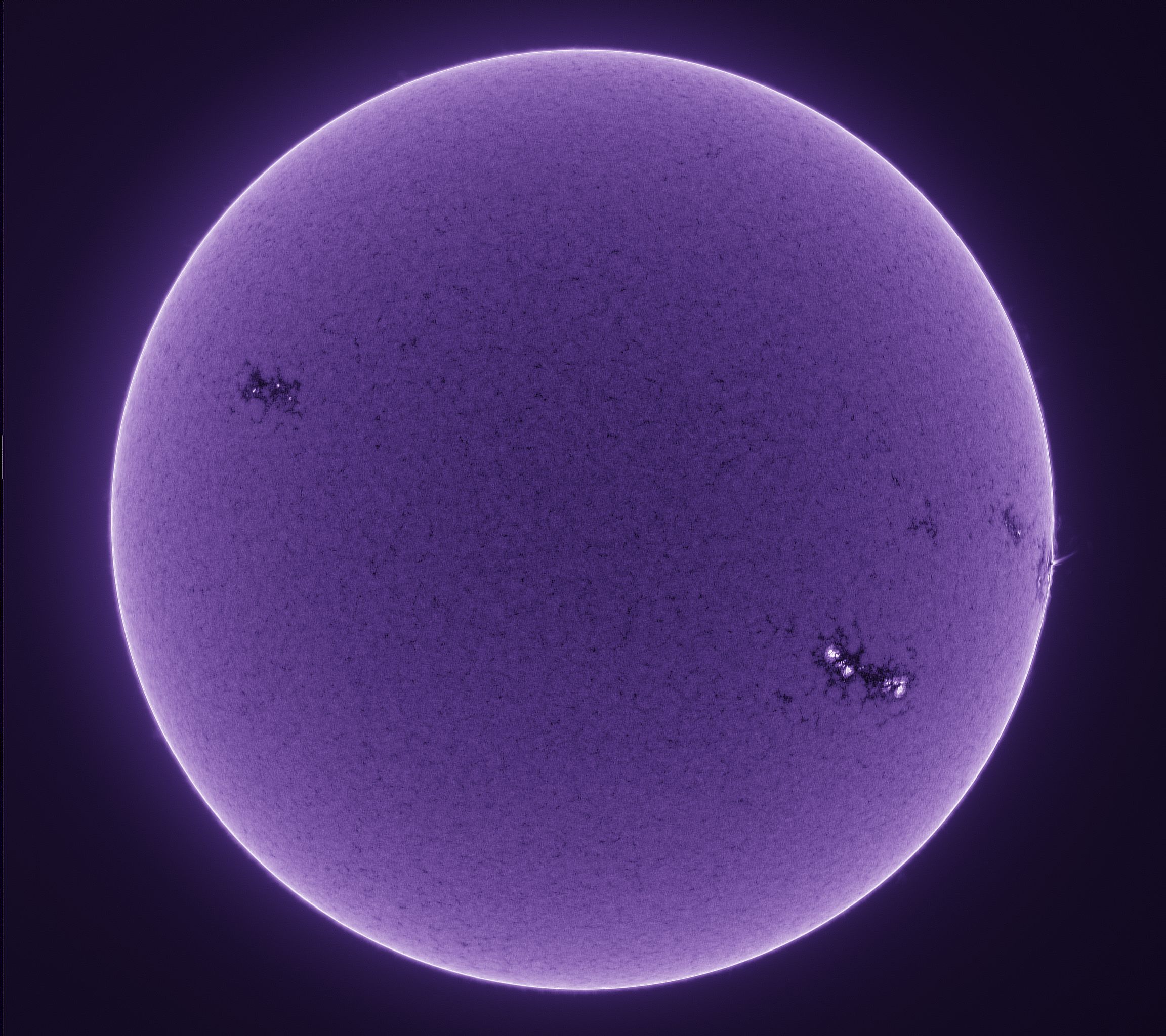 (Michael Wilkinson/The National Maritime Museum)
(Michael Wilkinson/The National Maritime Museum)
Where the photo was taken: Groningen, Netherlands
Description: The sun is photographed in Calcium-K (ie blue filter light that blocks all other wavelengths), depicting the star’s inner chromosphere.
Although the sun is shown entering a quieter phase, a lot of activity is still taking place, illustrating just how dynamic our star is.
Winter ice giant Uranus
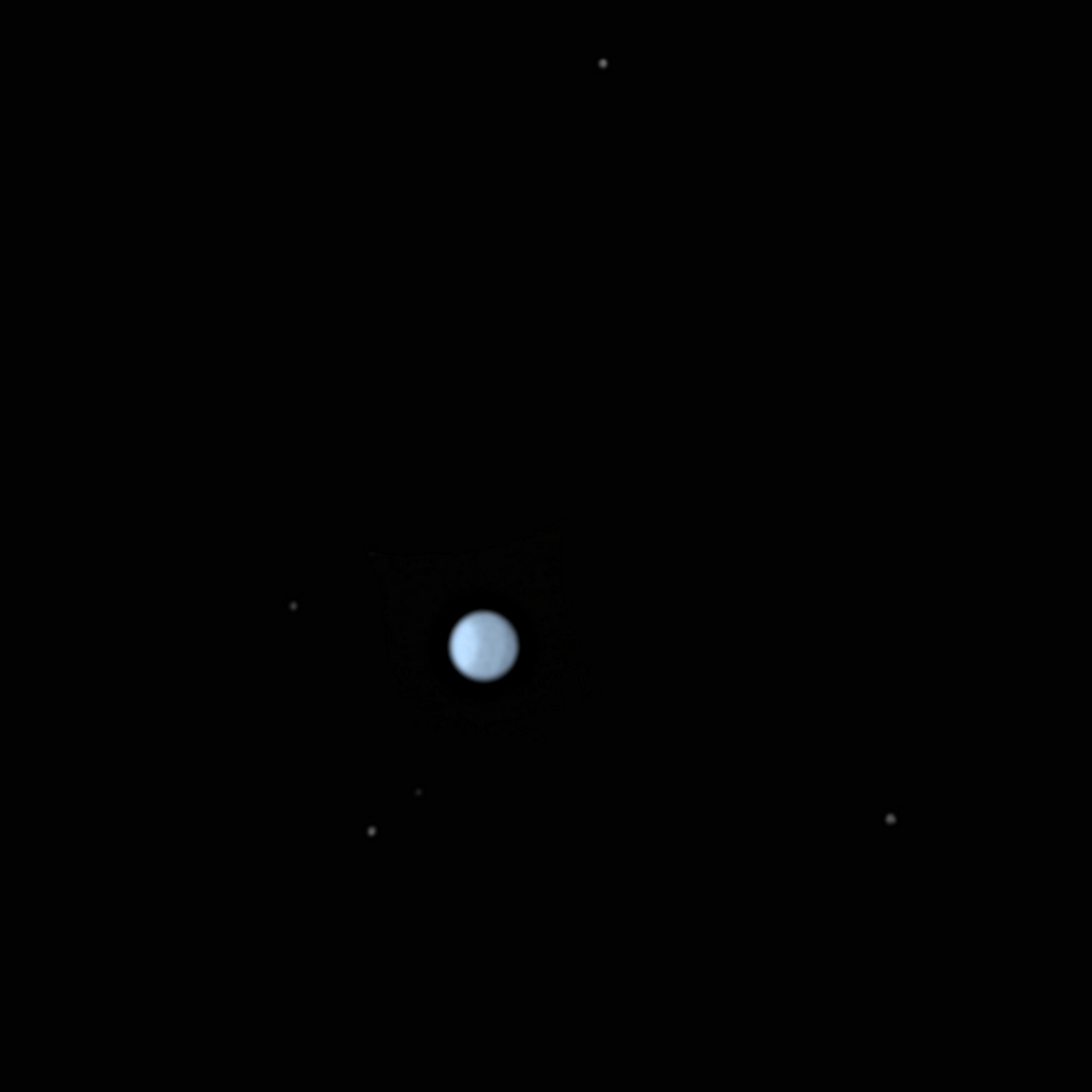 (Martin Lewis/The National Maritime Museum)
(Martin Lewis/The National Maritime Museum)
Where the photo was taken: St Albans, Hertfordshire, UK
Description: Found in the constellation of Pisces, Uranus can be seen surrounded by its five brightest moons: Ariel, Miranda, Umbriel, Titania and Oberon.
Taken on an exceptionally still night in late December, an infrared filter was used to further improve the viewing and to bring out the planet’s belt and cloud details.
As Uranus lies so far away (2.6 billion kilometres at its closest) from our own planet and appears so dim to us on Earth, the planet looks tiny.
The road back home
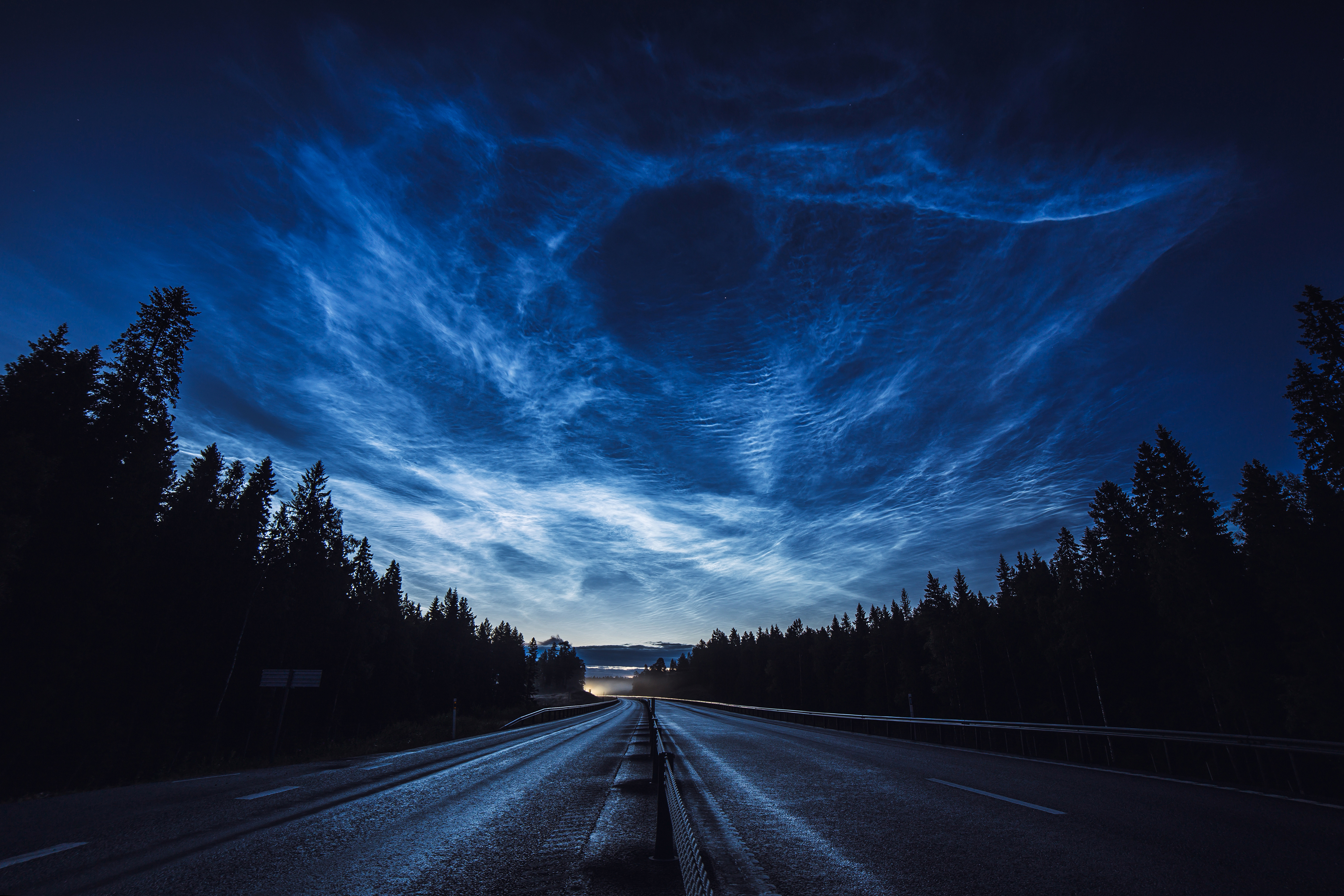 (Ruslan Merzlyakov/The National Maritime Museum)
(Ruslan Merzlyakov/The National Maritime Museum)
Where the photo was taken: Near Umea, Sweden
Description: Noctilucent clouds (the highest clouds in the Earth’s atmosphere that form 61km above the surface of our planet) stretch across the Swedish sky in this dramatic display.
Thought to be formed of ice crystals, the clouds occasionally become visible at twilight when the sun is below the horizon.
The lost hour
 (Andrew Whyte/The National Maritime Museum)
(Andrew Whyte/The National Maritime Museum)
Where the photo was taken: Titchfield, Hampshire, UK
Description: The concentric star trails seemingly spin over a lone stargazer against the glowing purples and pinks of the night sky during the hour when the clocks “spring forward” to begin British Summer Time.
Through the use of long exposures, the one-hour trails depict the rotation of the Earth on its axis centring on the north celestial pole.
Orion’s gaseous nebula
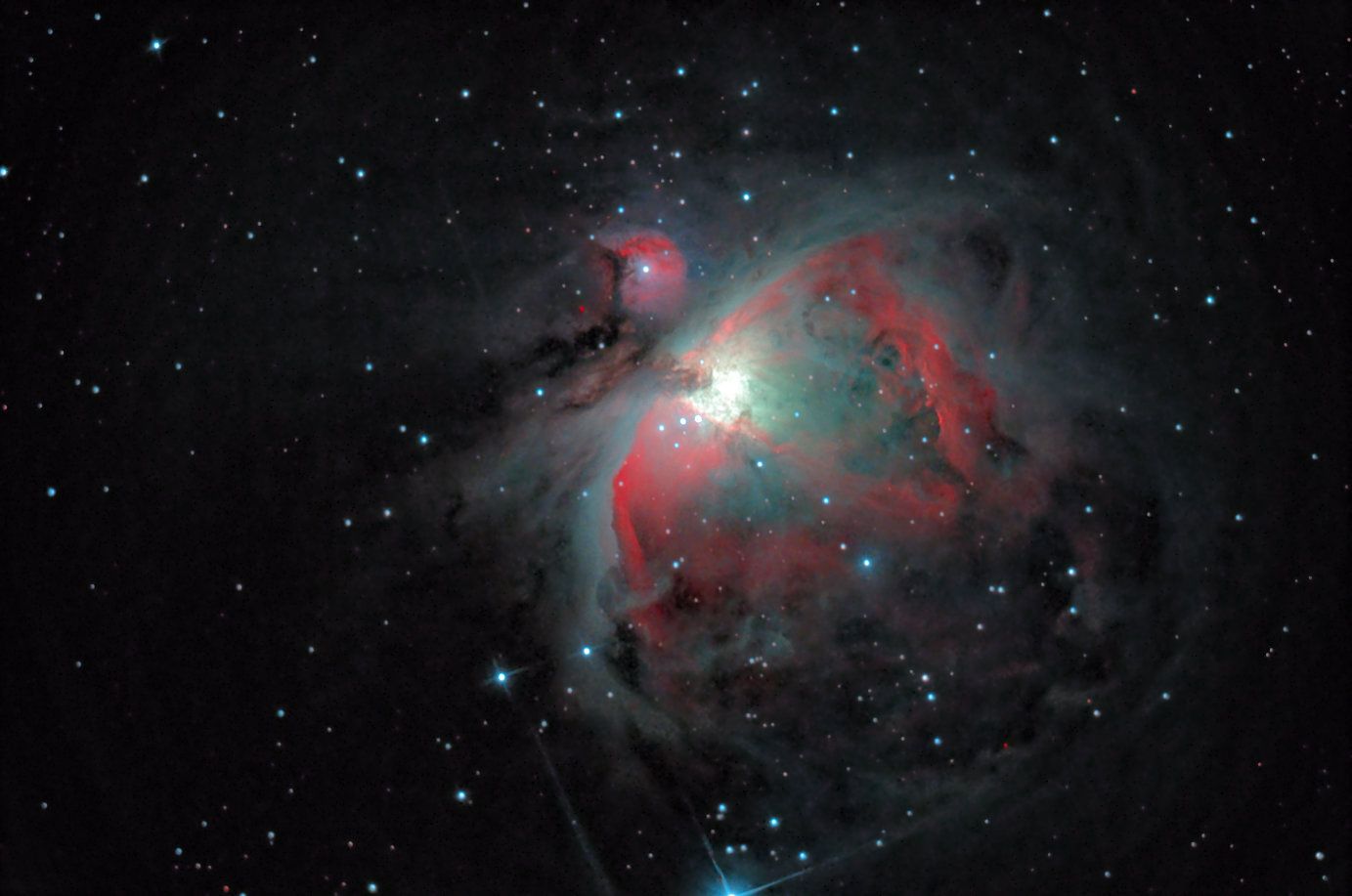 (Sebastien Grech/The National Maritime Museum)
(Sebastien Grech/The National Maritime Museum)
Where the photo was taken: London, UK
Description: Located 1,300 light years away from Earth, the Orion Nebula is found in Orion’s Sword.
The Orion Nebula is one of the most photographed and studied objects in the night sky due to the intense activity within the stellar nursery that sees thousands of new stars being created.
The nebula is thought to have a mass 2,000 times that of our sun.
The blue hour
 (Tommy Eliassen/The National Maritime Museum)
(Tommy Eliassen/The National Maritime Museum)
Where the photo was taken: Saltfjellet, Nordland, Norway
Description: The setting crescent moon and Mars gaze over Saltfjellet as the Northern Lights appear to emanate from the snowy landscape.
The Aurora Borealis was an unexpected guest in the shot as the sun was only about 10 degrees under the horizon, making the early display a surprise.
Supermoon
 (Giorgia Hofer/The National Maritime Museum)
(Giorgia Hofer/The National Maritime Museum)
Where the photo was taken: Laggio di Cadore, Province of Belluno, Italy
Description: The magnificent sight of the supermoon illuminating the night sky was captured as it set behind the Marmarole in the heart of the Dolomites in Italy.
On the night of November 14 2016, the moon appeared 30% brighter and 14% bigger than other full moons and was 356.511km away from the centre of Earth, the closest occurrence since 1948. It will not be closer again until 2034.
Star track in Kawakarpo
 (Zhong Wu/The National Maritime Museum)
(Zhong Wu/The National Maritime Museum)
Where the photo was taken: DeQin, Yunnan Province, China
Description: The stars beam down on to the Meili Snow Mountains, also known as the Prince Snow Mountains – the highest peaks in the Yunnan Province, China.
It is world-renowned for its beauty and is one of the most sacred mountains in Tibetan Buddhism. The moonlight striking the top of the mountains appears to give them an ethereal quality.
NGC 7331 – The Deer Lick Group
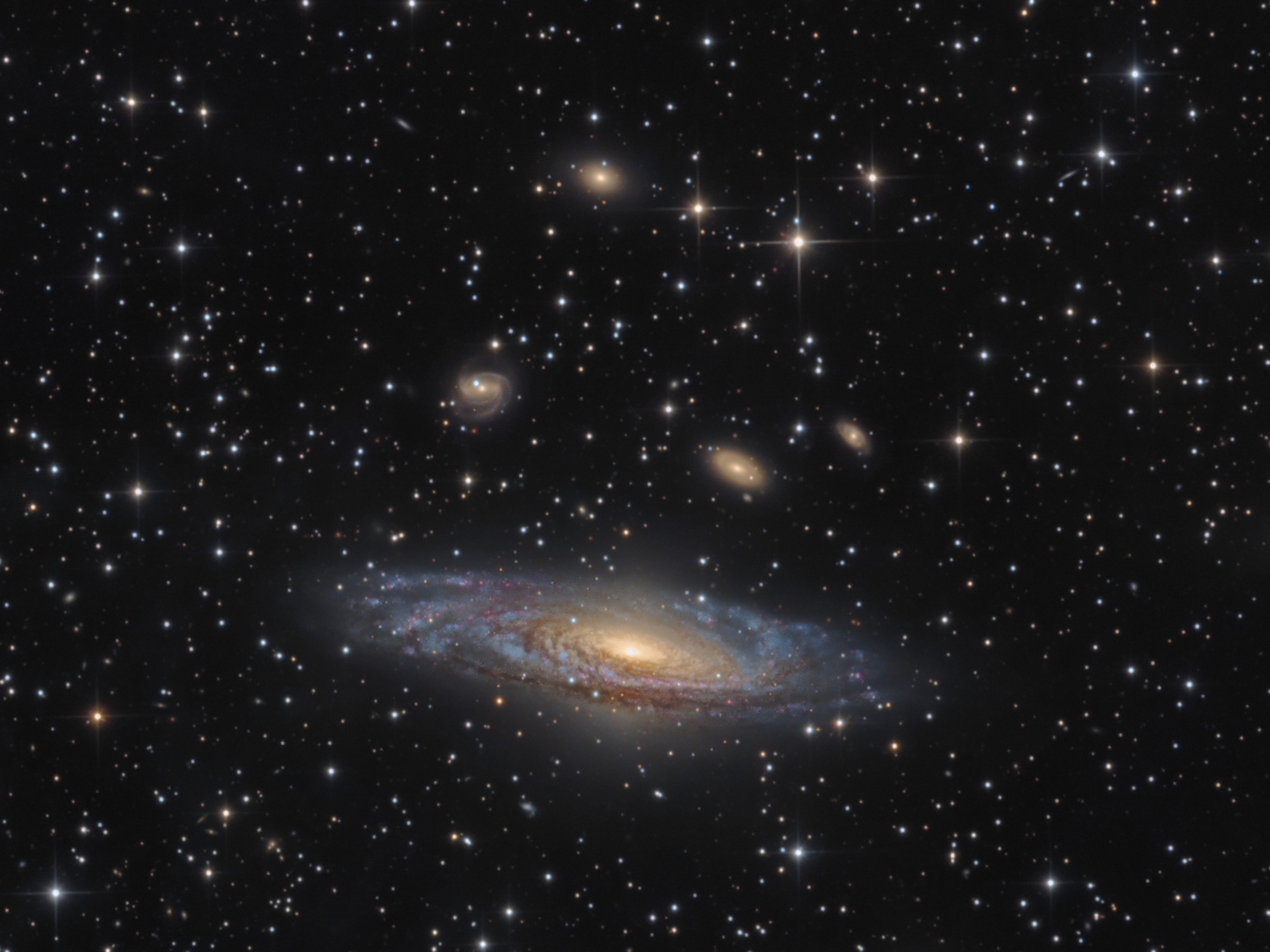 (Bernard Miller/The National Maritime Museum)
(Bernard Miller/The National Maritime Museum)
Where the photo was taken: Animas, New Mexico, US
Description: NGC 7331, a group of galaxies in the constellation Pegasus known as the Deer Lick Group, is an unbarred spiral galaxy found some 40 million light years away from Earth.
NGC 7331 is the largest, and can be seen dominating the image whilst the smaller galaxies NGC 7335, NGC 7336, NGC 7337, NGC 7338 and NGC 7340 drift above it.
Solar trails above the telescope
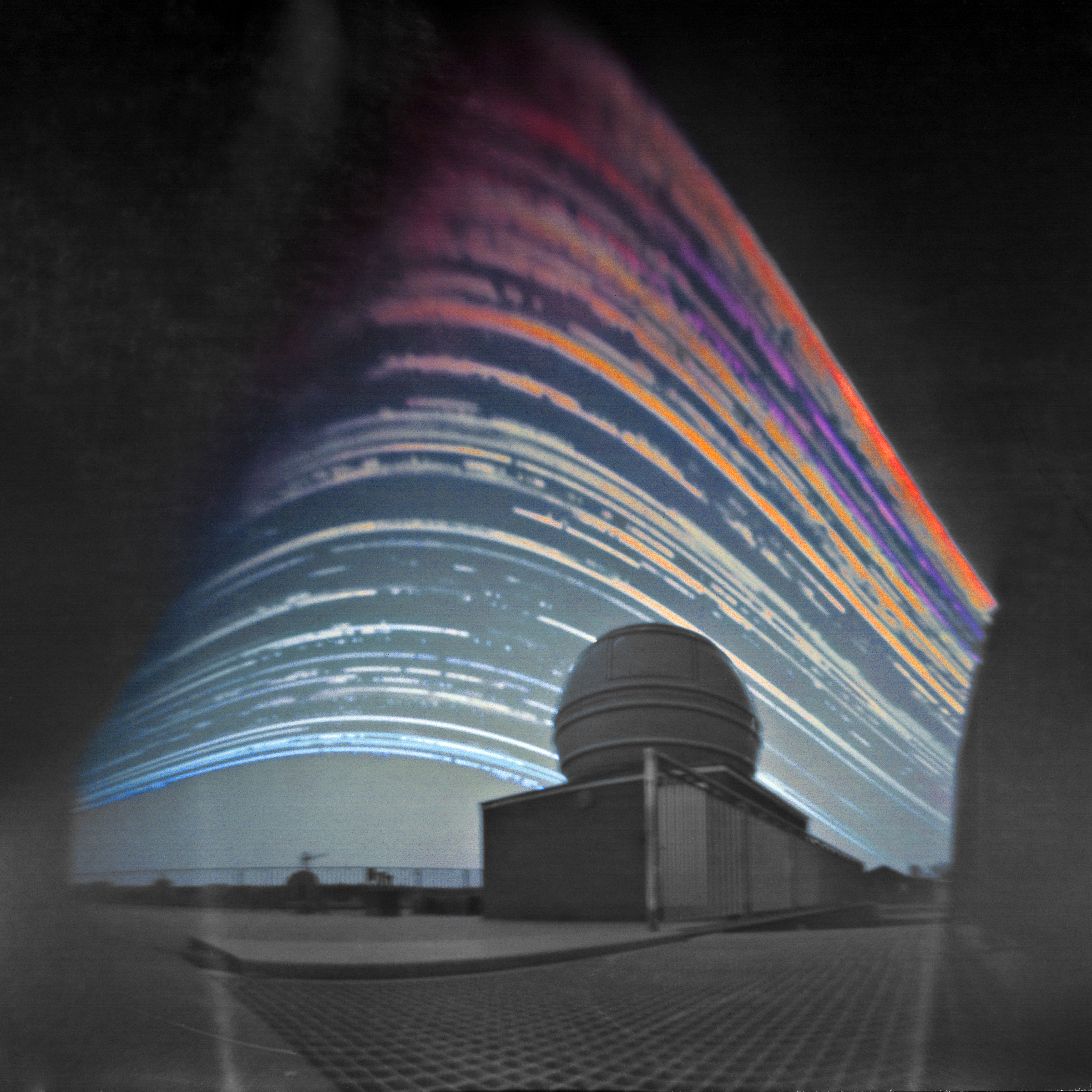 (Maciej Zapior/The National Maritime Museum)
(Maciej Zapior/The National Maritime Museum)
Where the photo was taken: Prague
Description: Taken with a solargraphy pinhole camera, the image charts the movement of the sun over the Astronomical Institute of the Czech Academy of Sciences, Prague, with an exposure of half a year (December 21 2015 – June 21 2016).
A regular black-and-white photographic paper was used as a photosensitive material and the negative was scanned and post-processed for colour and contrast enhancement.
The exposure time was from solstice to solstice, thus recording the solar trails above the telescope dome, and the rainbow of colours of the trails are the result of the sensitivity of the paper changing as it is exposed to different temperatures and humidity.
Shooting star and Jupiter
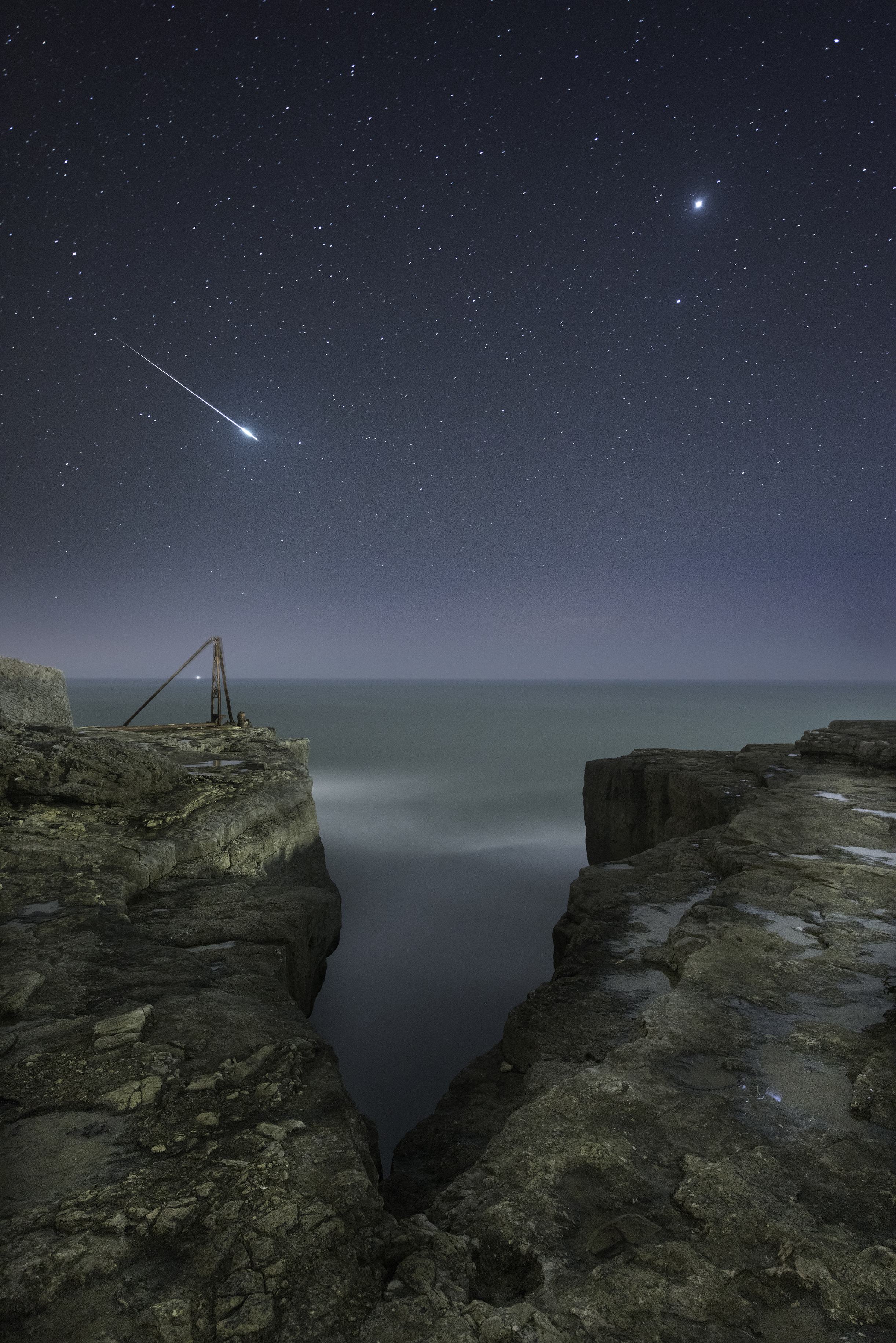 (Rob Bowes/The National Maritime Museum)
(Rob Bowes/The National Maritime Museum)
Where the photo was taken: Portland, Dorset, UK
Description: A shooting star flashes across the sky over the craggy landscape of Portland, Dorset, as our neighbouring planet Venus looks on.
The image was made using two stacked exposures: one for the sky and one for the rocks.
Sh2-249 – Jellyfish Nebula
 (Chris Heapy/The National Maritime Museum)
(Chris Heapy/The National Maritime Museum)
Where the photo was taken: Macclesfield, Cheshire, UK
Description: Lying in the constellation of Gemini, the IC443 is a galactic supernova remnant, a star that may have exploded as many as 30,000 years ago. Its globular appearance has earned the celestial structure the moniker of the Jellyfish Nebula.
Pictured to the upper left of the Jellyfish Nebula is a much fainter background area of nebulosity, which is actually a large cloud of mostly molecular hydrogen gas and dust. The “Jellyfish” is a convoluted tangle of gaseous filaments rapidly expanding away from the initial explosion.
Scintillating Sirius
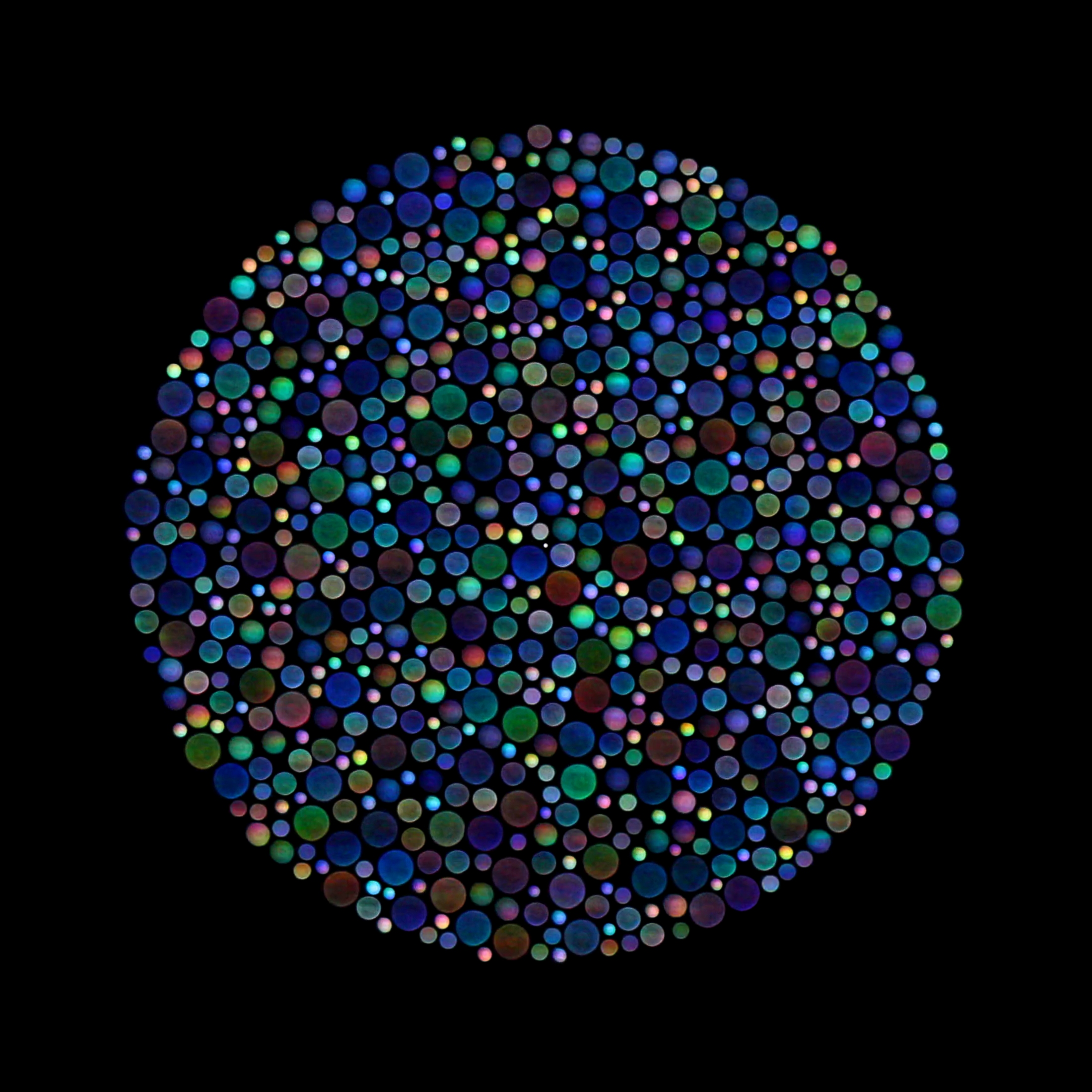 (Steve Brown/The National Maritime Museum)
(Steve Brown/The National Maritime Museum)
Where the photo was taken: Stokesley, North Yorkshire, UK
Description: The seemingly pop-art inspired canvas of the rainbow of colours is exhibited by the brightest star in our sky – Sirius.
While these colours are obvious through the eyepiece of a telescope, they are difficult to capture in an image.
To do this, the photographer had to “freeze” each colour as it happened by taking a series of videos at different levels of focus and then extracting the frames from each video to create the composite image. The image is made up of 782 different frames.
ISS daylight transit
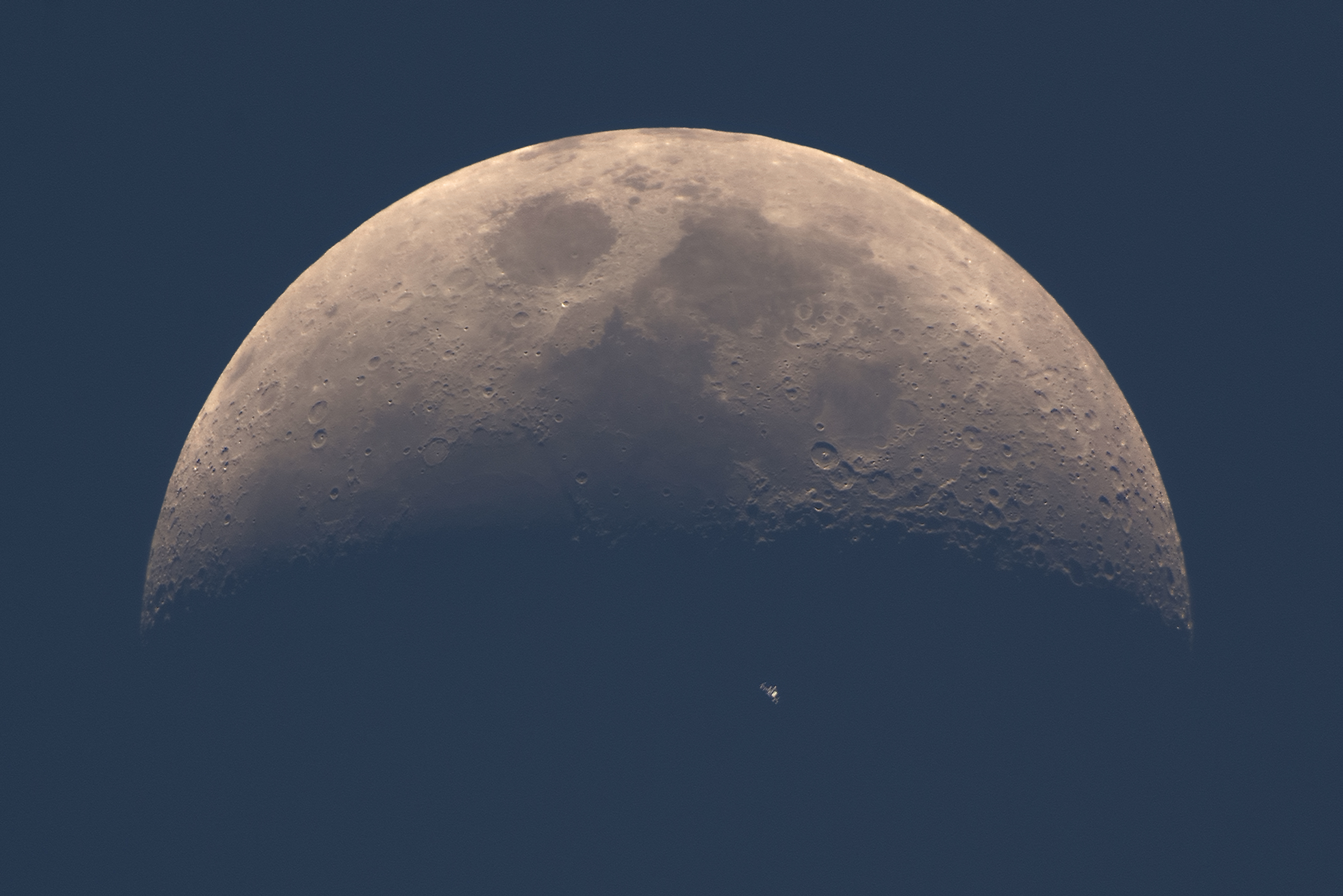 (Dani Caxete/The National Maritime Museum)
(Dani Caxete/The National Maritime Museum)
Where the photo was taken: Madrid, Spain
Description: The International Space Station (ISS) can be seen whizzing across the dusky face of the Earth’s natural satellite, the moon, whilst photographed in broad daylight.
No composite or clipping processes were used for this image.
Ignite the Lights
 (Nicolas Alexander Otto/The National Maritime Museum)
(Nicolas Alexander Otto/The National Maritime Museum)
Where the photo was taken: Fredvang, Nordland, Norway
Description: The image is stacked from six different exposures to combat high ISO and thermal noise in the foreground to show the magnificence of the auroral display.
The sky was added from one of these exposures.
Hustle and peaceful
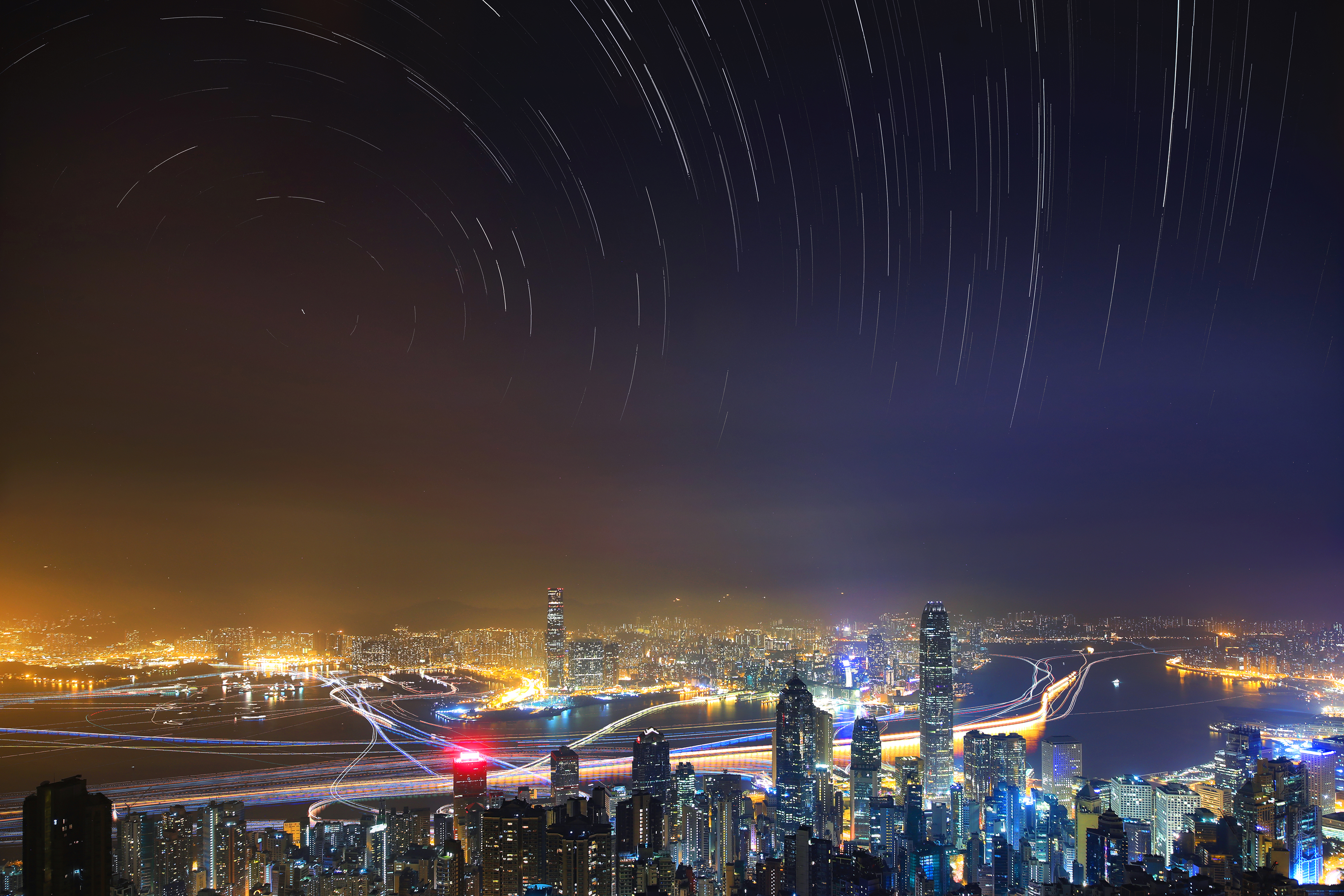 (Prisca Law/The National Maritime Museum)
(Prisca Law/The National Maritime Museum)
Where the photo was taken: The Peak, Hong Kong
Description: Taken from The Peak, the highest mountain on Hong Kong Island, the image shows the hustle and bustle of the city in contrast to the peaceful starry sky.
The haze above the beautiful landscape is caused by light pollution.
Fall Milk
 (Brandon Yoshizawa/The National Maritime Museum)
(Brandon Yoshizawa/The National Maritime Museum)
Where the photo was taken: Eastern Sierras, California, US
Description: The snow-clad mountain in the Eastern Sierras towers over the rusty aspen grove aligned perfectly in front of it, whilst our galaxy the Milky Way glistens above.
Eastern prominence
 (Paul Andrew/The National Maritime Museum)
(Paul Andrew/The National Maritime Museum)
Where the photo was taken: Dover, Kent, UK
Description: The large solar prominence (bright feature extending outward from the sun’s surface) was shot in August 2016.
There are a number of different prominence types that have been observed emanating from the sun, and the photo shows hedgerow prominence – a grouping of small prominences resembling rough and wild shrubbery – in particular.
Crescent moon over the Needles
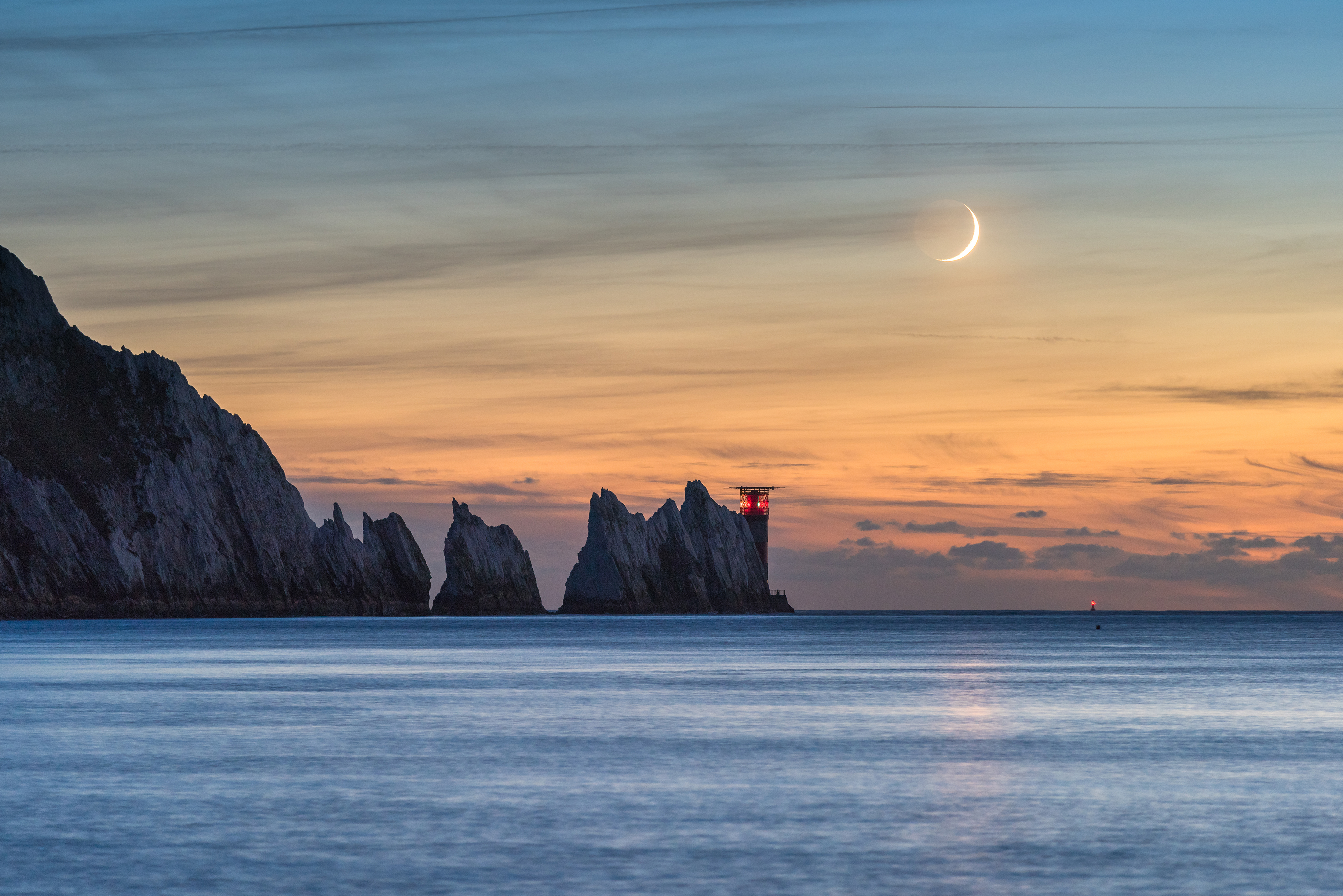 (Ainsley Bennett/The National Maritime Museum)
(Ainsley Bennett/The National Maritime Museum)
Where the photo was taken: Alum Bay, Freshwater, Isle of Wight, UK
Description: The 7% waxing crescent moon is seen setting in the evening sky over the Needles Lighthouse at the western tip of the Isle of Wight.
Despite the moon being a thin crescent, the rest of its shape is defined by sunlight reflecting back from the Earth’s surface.
Beautiful Tromso
 (Derek Burdeny/The National Maritime Museum)
(Derek Burdeny/The National Maritime Museum)
Where the photo was taken: Tromso, Norway
Description: The aurora activity forecast was low when the photo was taken, so the photographer remained in Tromso rather than driving to the fjord to capture the display.
Instead, he captured nature’s answer to a stunning firework display as the Northern Lights danced above a rainbow cast in the waters of the harbour in Tromso, which made for a spectacular display.
Auroral Crown
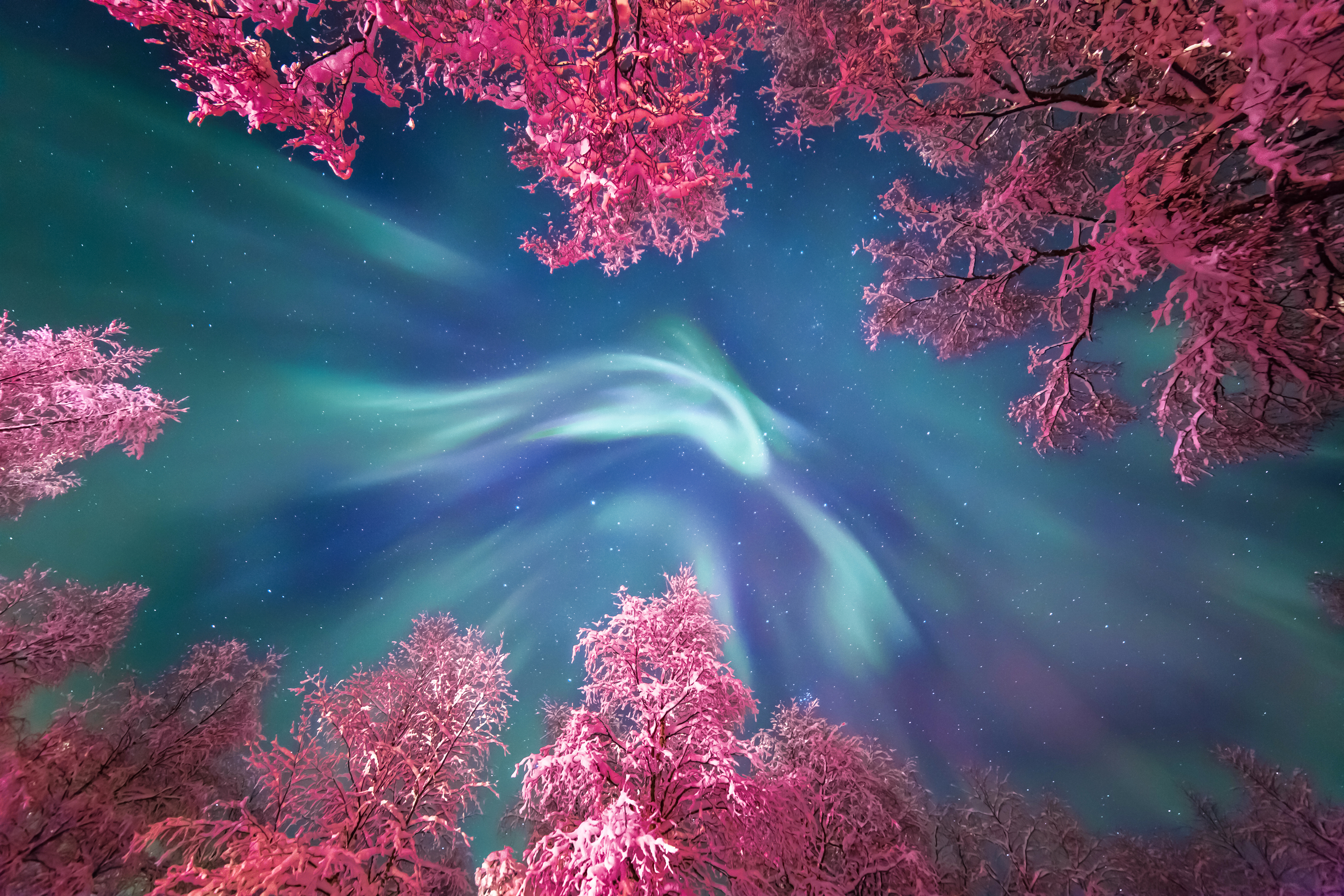 (Yulia Zhulikova/The National Maritime Museum)
(Yulia Zhulikova/The National Maritime Museum)
Where the photo was taken: Murmansk, Russia
Description: The image was captured on an astrophotography tour of the Murmansk region with Stas Korotkiy – an amateur astronomer in Russia.
The turquoise of the Aurora Borealis is seen swirling above the snow-covered trees illuminated by street lamps. The trees glow a vivid pink, forming a contrasting frame for nature’s greatest light show.
Aurora over Svea
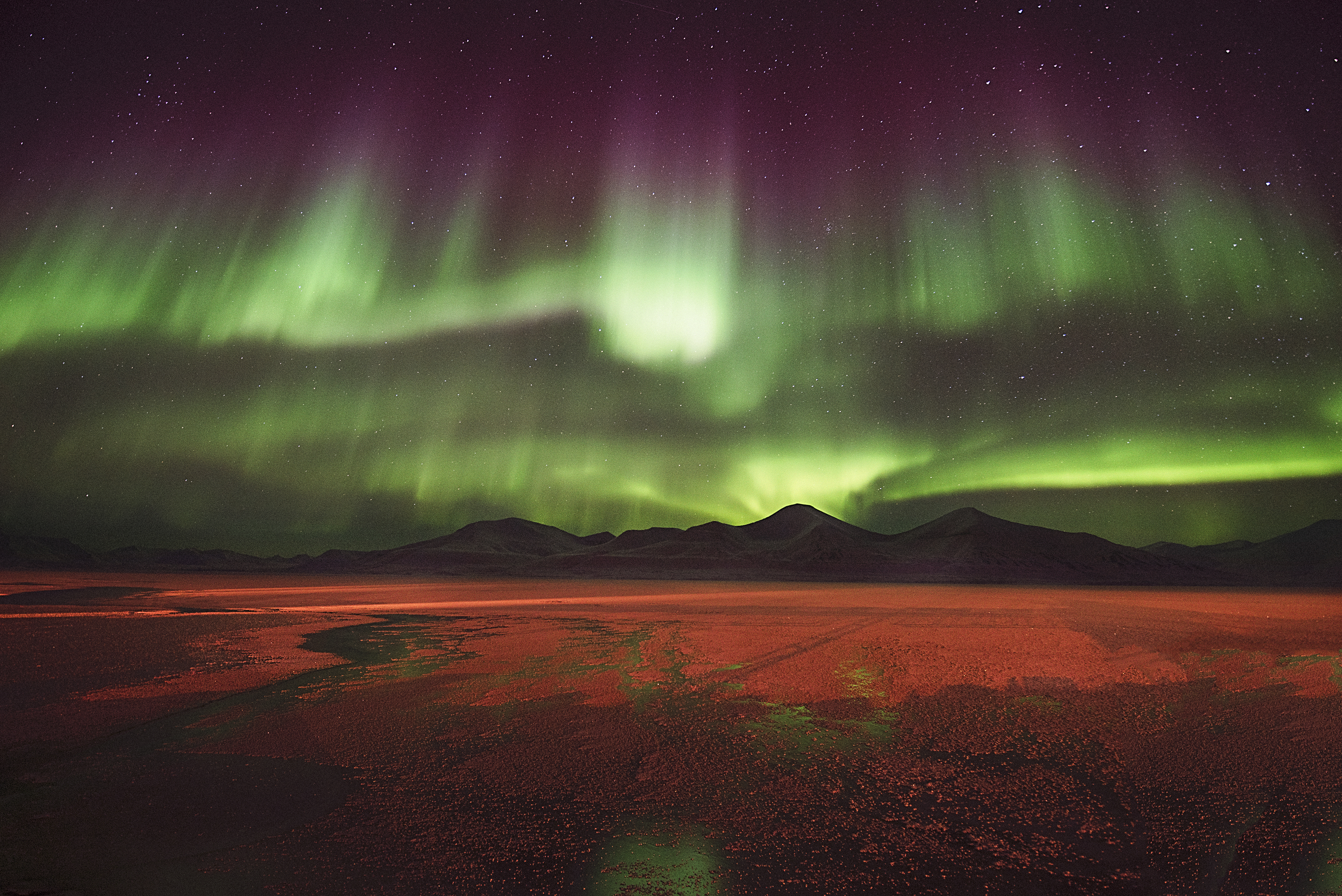 (Agurtxane Concellon/The National Maritime Museum)
(Agurtxane Concellon/The National Maritime Museum)
Where the photo was taken: Svea, Svalbard, Norway
Description: The purples and greens of the Northern Lights radiate over the coal mining city of Svea, in the archipelago of Svalbard.
The earthy landscape below the glittering sky is illuminated by the strong lights of industry at the pier of Svea.
An icy moonscape
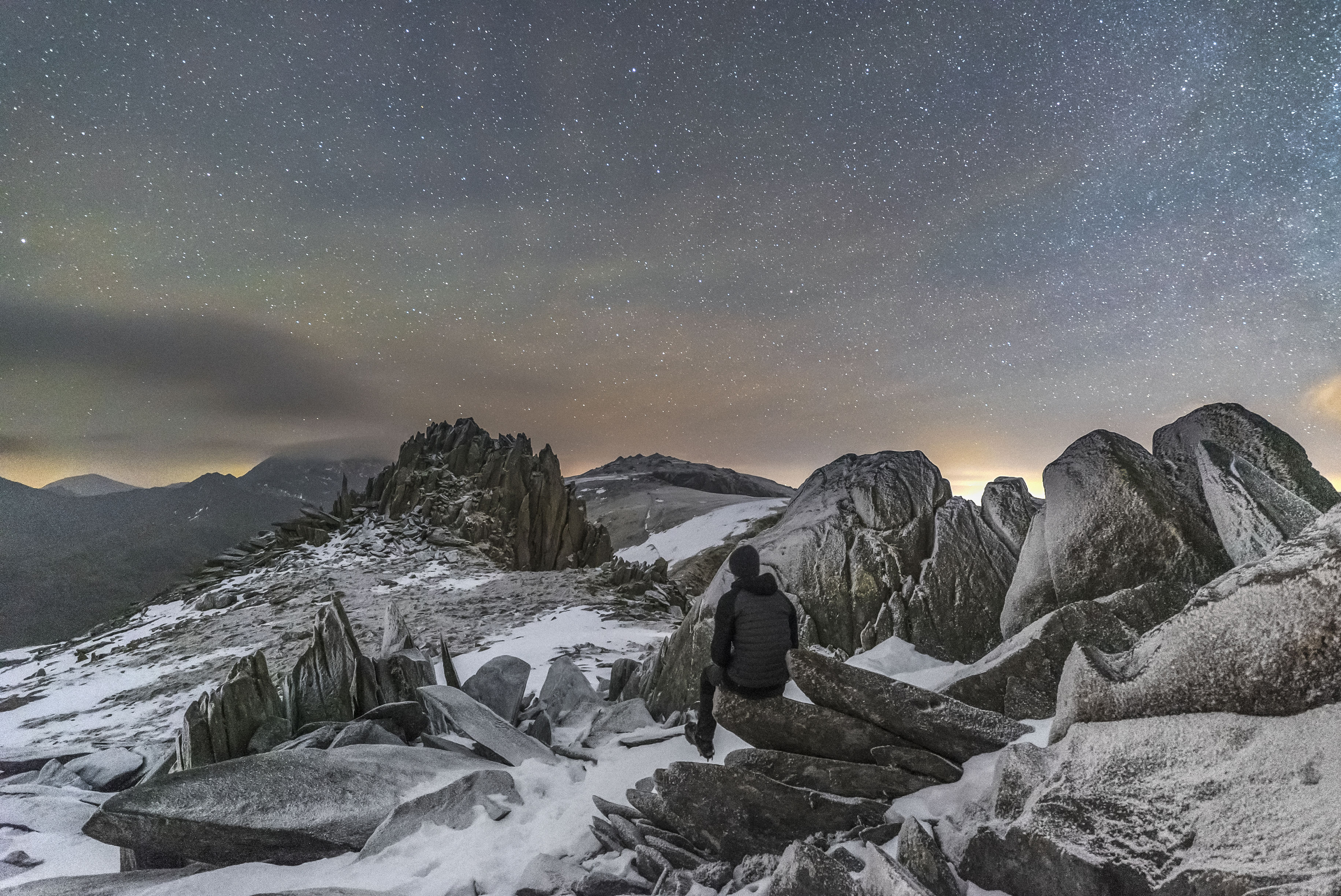 (Kris Williams/The National Maritime Museum)
(Kris Williams/The National Maritime Museum)
Where the photo was taken: Capel Curig, Snowdonia National Park, UK
Description: A lone stargazer sits atop the peak of Castell-Y-Gwynt (Castle of the Winds) on Glyder Fach Mountain in Snowdonia beneath a starry night sky during freezing temperatures in mid-winter.
The lunar-like landscape was formed through a process called freeze-thaw weathering – where water seeps into cracks in the rock, freezing and expanding as ice forms, eventually cracking the rock over hundreds and thousands of years.
Brief rotation of Mount Olympus
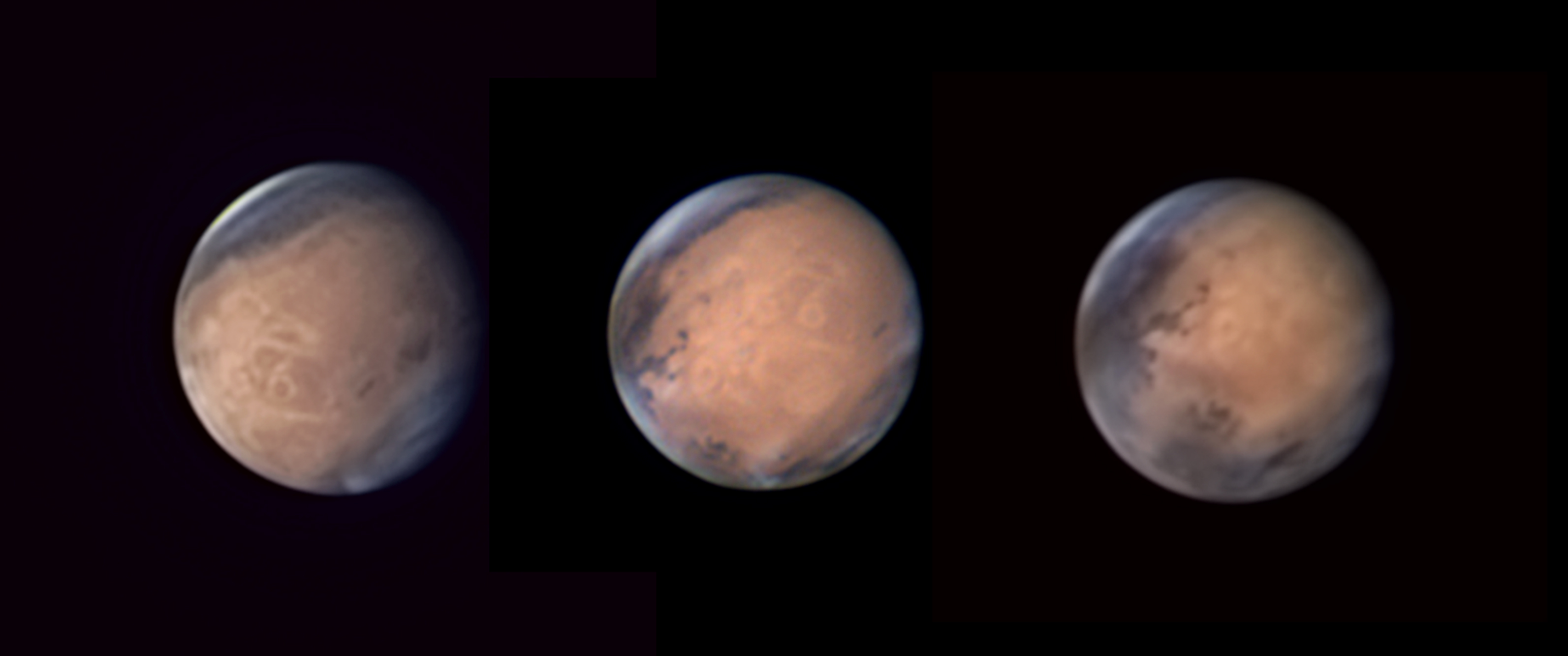 (Avani Soares/The National Maritime Museum)
(Avani Soares/The National Maritime Museum)
Where the photo was taken: Canoas, Rio Grande do Sul, Brazil
Description: A series photos of Mars taken between June 1 and July 3 2016 shows Mount Olympus in three different positions.
Mount Olympus, also known as Olympus Mons, is the tallest volcano in the Solar System.
The features on the surface of Mars (as seen from Earth) change rapidly, as seen in the contrast between the central photo, made during the opposition (when Mars is at its closest to the Earth), and the photo on the left, taken 33 days later.
A battle we are losing
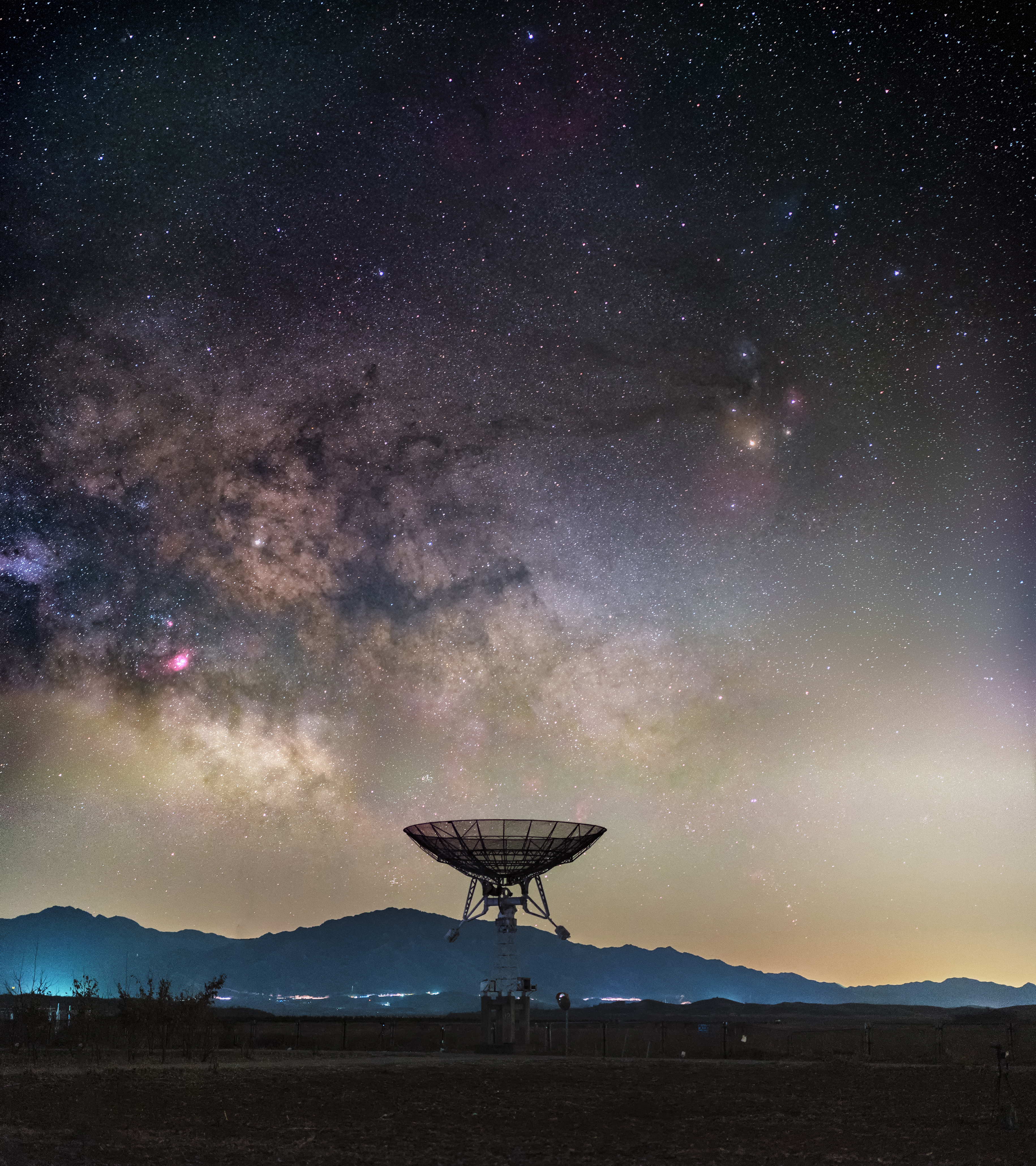 (Haitong Yu/The National Maritime Museum)
(Haitong Yu/The National Maritime Museum)
Where the photo was taken: Beijing, China
Description: The photo shows the Milky Way rising above a small radio telescope from a large array at Miyun Station, National Astronomical Observatory of China, in the suburbs of Beijing.
The image depicts the ever-growing light pollution we now experience, which together with electromagnetic noise has turned many optical and radio observatories near cities both blind and deaf – a battle that inspired the photographer’s title of the shot.
The image used a light pollution filter (iOptron L-Pro) and multiple frame stacking to get the most of the Milky Way out of the city light.
Mr Big Dipper
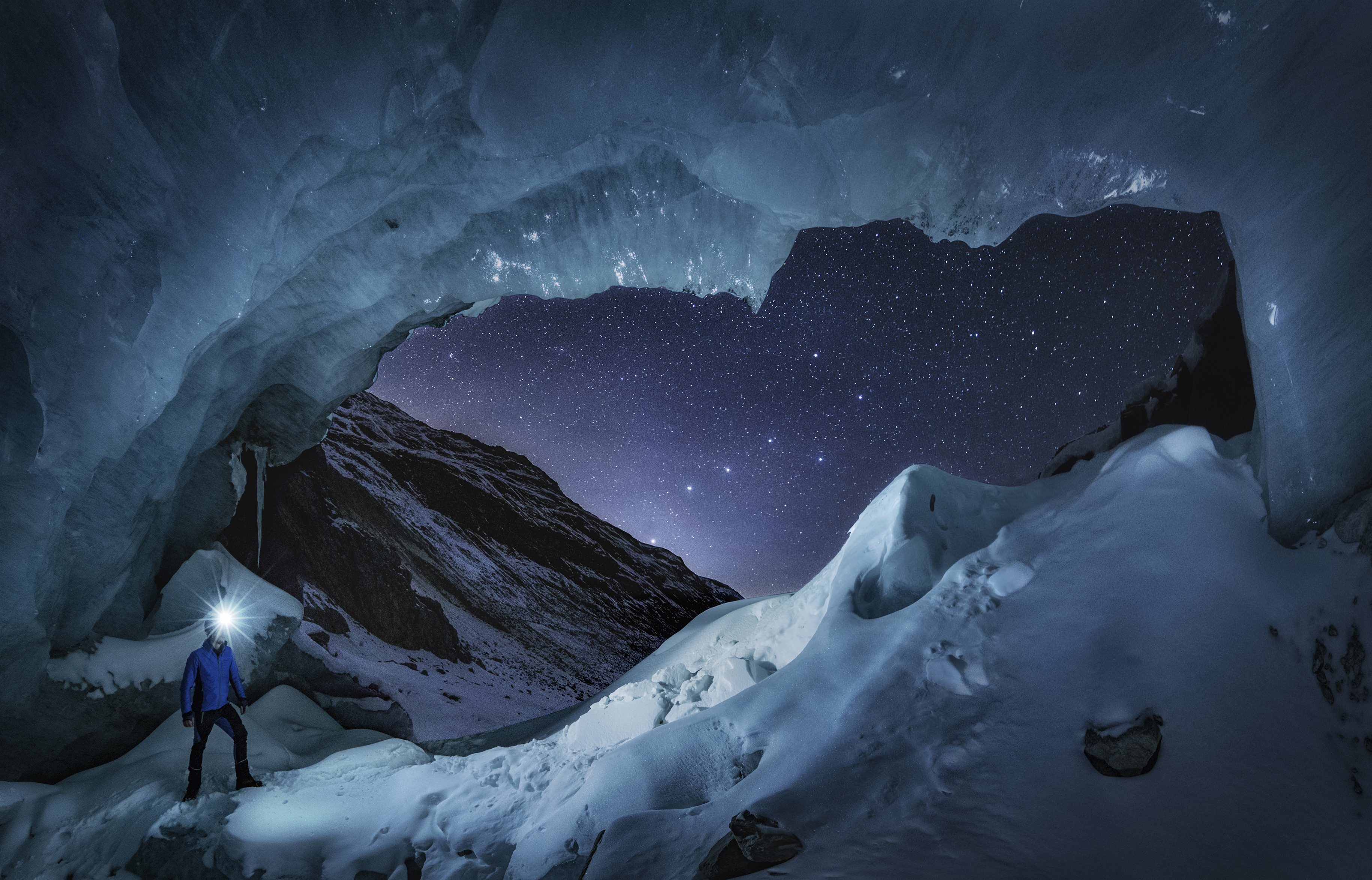 (Nicholas Roemmelt/The National Maritime Museum)
(Nicholas Roemmelt/The National Maritime Museum)
Where the photo was taken: Engadin, Graubunden, Switzerland
Description: The photo shows a stargazer observing the constellation of the Big Dipper perfectly aligned with the window of the entrance to a large glacier cave in Engadin, Switzerland.
The image is a panorama of two pictures, and each is a stack of another two pictures: one for the stars and another one for the foreground, but with no composing or time blending.
NGC 2023
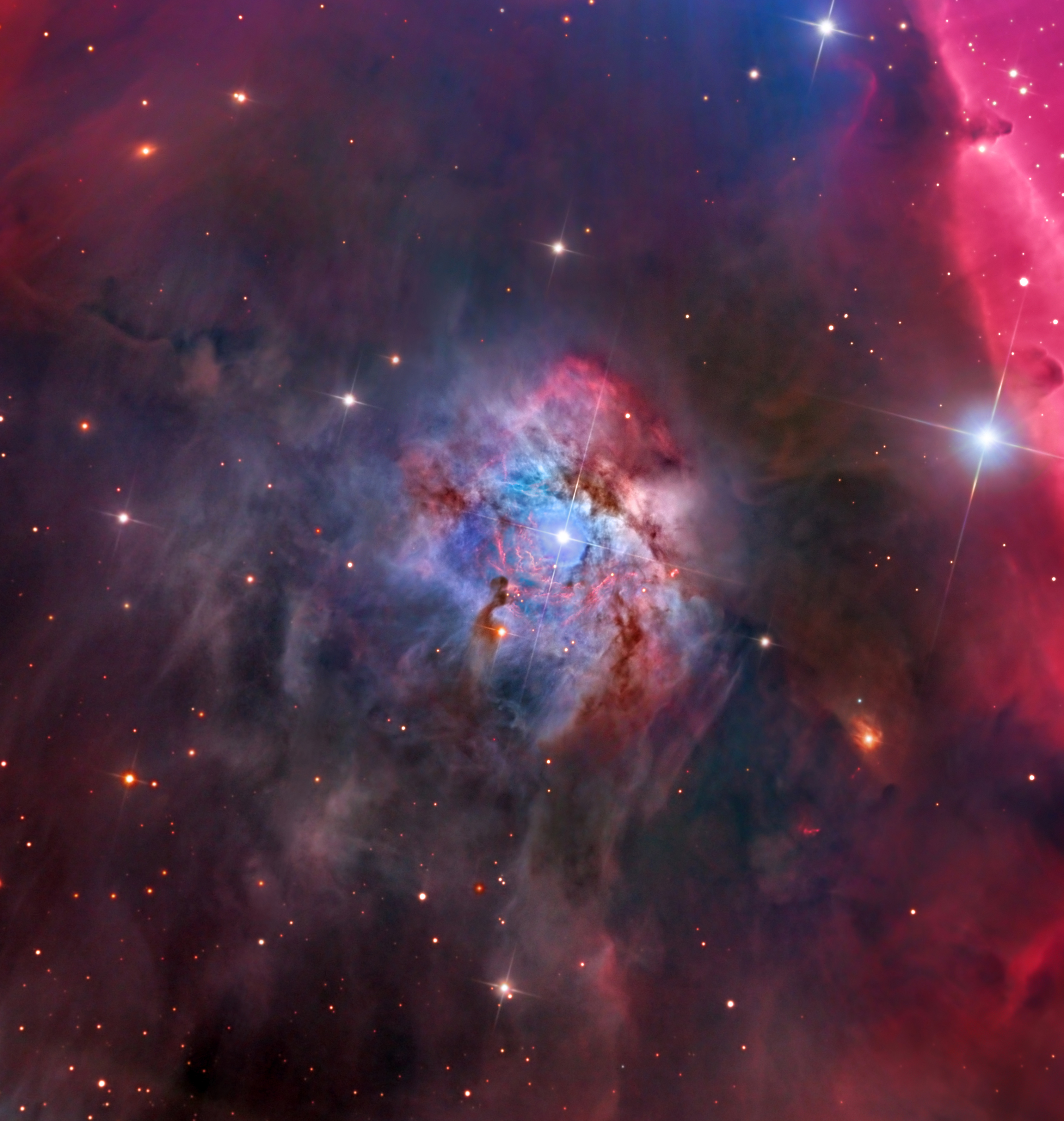 (Warren Keller/The National Maritime Museum)
(Warren Keller/The National Maritime Museum)
Where the photo was taken: Cerro Tololo Inter-American Observatory, near La Serena, Chile
Description: Lying in the constellation of Orion, at a distance of 1,467 light years from our planet, is the emission and reflection nebula NGC 2023.
Most often photographed next to the famous Horsehead Nebula, the photographer has instead given NGC 2023 the spotlight in order to try to bring out all of the wonderful detail seen across its diameter of four light years, making it one of the largest reflection nebulae ever discovered.


Why are you making commenting on The Herald only available to subscribers?
It should have been a safe space for informed debate, somewhere for readers to discuss issues around the biggest stories of the day, but all too often the below the line comments on most websites have become bogged down by off-topic discussions and abuse.
heraldscotland.com is tackling this problem by allowing only subscribers to comment.
We are doing this to improve the experience for our loyal readers and we believe it will reduce the ability of trolls and troublemakers, who occasionally find their way onto our site, to abuse our journalists and readers. We also hope it will help the comments section fulfil its promise as a part of Scotland's conversation with itself.
We are lucky at The Herald. We are read by an informed, educated readership who can add their knowledge and insights to our stories.
That is invaluable.
We are making the subscriber-only change to support our valued readers, who tell us they don't want the site cluttered up with irrelevant comments, untruths and abuse.
In the past, the journalist’s job was to collect and distribute information to the audience. Technology means that readers can shape a discussion. We look forward to hearing from you on heraldscotland.com
Comments & Moderation
Readers’ comments: You are personally liable for the content of any comments you upload to this website, so please act responsibly. We do not pre-moderate or monitor readers’ comments appearing on our websites, but we do post-moderate in response to complaints we receive or otherwise when a potential problem comes to our attention. You can make a complaint by using the ‘report this post’ link . We may then apply our discretion under the user terms to amend or delete comments.
Post moderation is undertaken full-time 9am-6pm on weekdays, and on a part-time basis outwith those hours.
Read the rules here